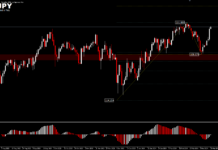The US Dollar is weaker, after the ADP employment data report lowered the odds of the Fed raising interest rates later in the year. This favoured the Japanese Yen temporarily, although it is too early to conclude that, given that there is still important economic data throughout October that will be important inputs for the BOJ. Nonetheless, the Yen rose past 149.00 per dollar, climbing further from 11-month lows. The Yen also saw a 1.7% rise earlier this week to 147.28 which traders attributed to potential government intervention, before giving back most of those gains. Meanwhile, the BOJ’s latest money market data showed that the bank did not conduct any yen buying operations, as the exchange rate fell to 150.00 to the dollar last Tuesday. Nonetheless, markets are still digesting Tuesday’s intervention rumours and trying to evaluate possible next steps from the Japanese authorities.
According to Reuters, the BOJ may only check rates throughout the New York session, and as a result, institutions that usually handle interventions sold USDJPY in large quantities in response. Shunichi Suzuki, Minister of Finance, recently warned that he is monitoring currency movements carefully.
August’s inflation figures corroborated the declines seen in other regions, potentially complicating the BOJ’s work. The latest quarterly Tankan was largely upbeat and retail sales continued their surprising rise. For this acceleration in inflation to be ensured, the BOJ is placing great faith in the continuation of wage increases. Since taking office in April, Governor Ueda has been quite explicit about the importance of wages as well as income in achieving an exit from the current loose monetary policy.
Technical Analysis
USDJPY – the intraday bias is still neutral for now and sideways trading may look more likely to prevail. On the downside, a move below 147.28 will turn the bias to the downside for a deeper pullback. However there is no confirmation of bearish trend reversal before a strong break of the 144.44 support. Another rally remains in favour through 150.15 to retest the 151.94 high.

Meanwhile, the EURJPY pair showed a similar trend. The price peaked at 159.75 on 30 August, which was the strongest level since 22 February 2007. It is currently hovering around the 156.50 region as the market digests rumours of Tuesday’s intervention. A series of positive data could allow sellers to target lower EURJPY values, but ultimately, the threat of continued market intervention by Japanese authorities will largely determine the market’s reaction function. The weakness of the EURUSD pair has kept the EURJPY cross pair in consolidation since the end of June. The important support 151.39 will be the decisive level, as a move below this level will confirm the start of the corrective wave.

Yesterday’s Eurozone economic data had little effect. On the positive side, the September Eurozone S&P composite PMI was revised up by +0.1 to 47.2 from the initial report of 47.1. In contrast, August retail sales fell -1.2% m/m, weaker than expectations of -0.5% m/m and the largest decline in 8 months. In addition, August PPI fell by a record -11.5% y/y from a -7.6% y/y decline in July, which is a dovish factor for ECB policy.
Click here to access our Economic Calendar
Ady Phangestu
Market Analyst – HF Educational Office – Indonesia
Disclaimer: This material is provided as a general marketing communication for information purposes only and does not constitute an independent investment research. Nothing in this communication contains, or should be considered as containing, an investment advice or an investment recommendation or a solicitation for the purpose of buying or selling of any financial instrument. All information provided is gathered from reputable sources and any information containing an indication of past performance is not a guarantee or reliable indicator of future performance. Users acknowledge that any investment in Leveraged Products is characterized by a certain degree of uncertainty and that any investment of this nature involves a high level of risk for which the users are solely responsible and liable. We assume no liability for any loss arising from any investment made based on the information provided in this communication. This communication must not be reproduced or further distributed without our prior written permission.



















